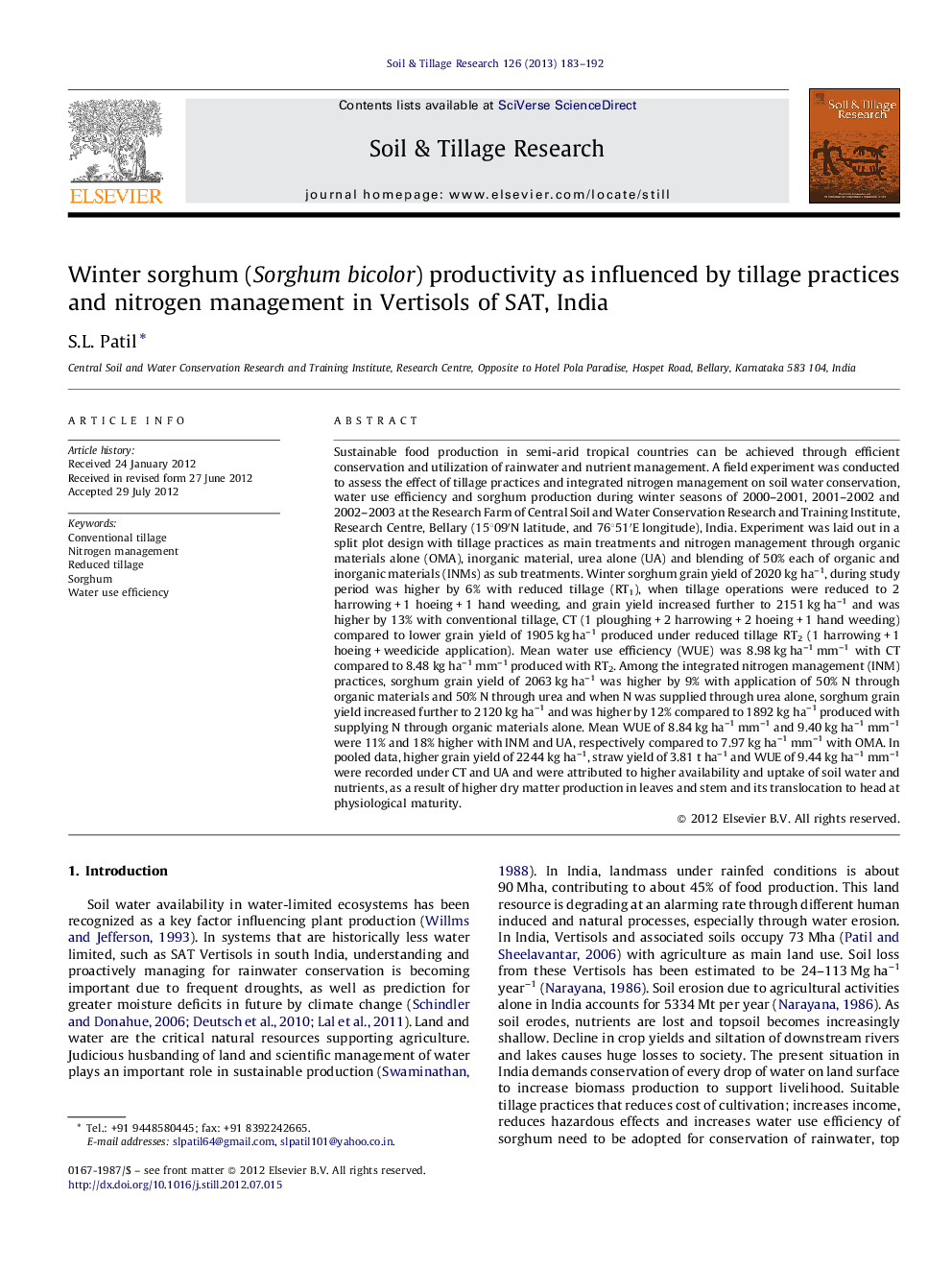| کد مقاله | کد نشریه | سال انتشار | مقاله انگلیسی | نسخه تمام متن |
|---|---|---|---|---|
| 305980 | 513064 | 2013 | 10 صفحه PDF | دانلود رایگان |

Sustainable food production in semi-arid tropical countries can be achieved through efficient conservation and utilization of rainwater and nutrient management. A field experiment was conducted to assess the effect of tillage practices and integrated nitrogen management on soil water conservation, water use efficiency and sorghum production during winter seasons of 2000–2001, 2001–2002 and 2002–2003 at the Research Farm of Central Soil and Water Conservation Research and Training Institute, Research Centre, Bellary (15°09′N latitude, and 76°51′E longitude), India. Experiment was laid out in a split plot design with tillage practices as main treatments and nitrogen management through organic materials alone (OMA), inorganic material, urea alone (UA) and blending of 50% each of organic and inorganic materials (INMs) as sub treatments. Winter sorghum grain yield of 2020 kg ha–1, during study period was higher by 6% with reduced tillage (RT1), when tillage operations were reduced to 2 harrowing + 1 hoeing + 1 hand weeding, and grain yield increased further to 2151 kg ha–1 and was higher by 13% with conventional tillage, CT (1 ploughing + 2 harrowing + 2 hoeing + 1 hand weeding) compared to lower grain yield of 1905 kg ha–1 produced under reduced tillage RT2 (1 harrowing + 1 hoeing + weedicide application). Mean water use efficiency (WUE) was 8.98 kg ha–1 mm–1 with CT compared to 8.48 kg ha–1 mm–1 produced with RT2. Among the integrated nitrogen management (INM) practices, sorghum grain yield of 2063 kg ha–1 was higher by 9% with application of 50% N through organic materials and 50% N through urea and when N was supplied through urea alone, sorghum grain yield increased further to 2120 kg ha–1 and was higher by 12% compared to 1892 kg ha–1 produced with supplying N through organic materials alone. Mean WUE of 8.84 kg ha–1 mm–1 and 9.40 kg ha–1 mm–1 were 11% and 18% higher with INM and UA, respectively compared to 7.97 kg ha–1 mm–1 with OMA. In pooled data, higher grain yield of 2244 kg ha–1, straw yield of 3.81 t ha–1 and WUE of 9.44 kg ha–1 mm–1 were recorded under CT and UA and were attributed to higher availability and uptake of soil water and nutrients, as a result of higher dry matter production in leaves and stem and its translocation to head at physiological maturity.
► Conventional tillage compared to reduced tillage conserved more rainwater.
► Sorghum grain yield increased by 11% in conventional tillage over reduced tillage.
► N application through urea increased sorghum grain yield by 12% over organic materials.
► WUE was higher by 18% with N application through urea compared to organic materials.
► Higher grain yield and WUE recorded in conventional tillage and N application through urea.
Journal: Soil and Tillage Research - Volume 126, January 2013, Pages 183–192